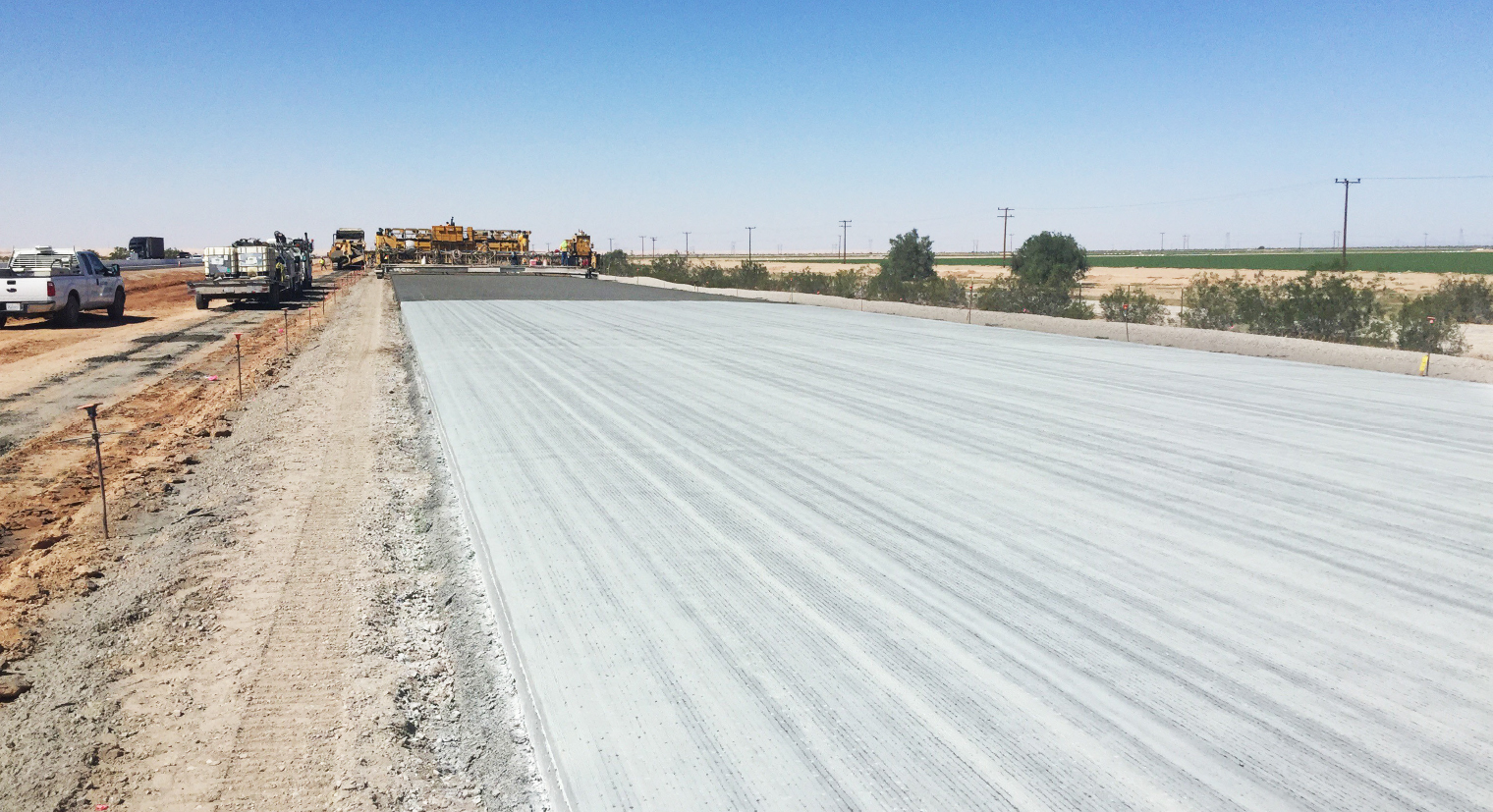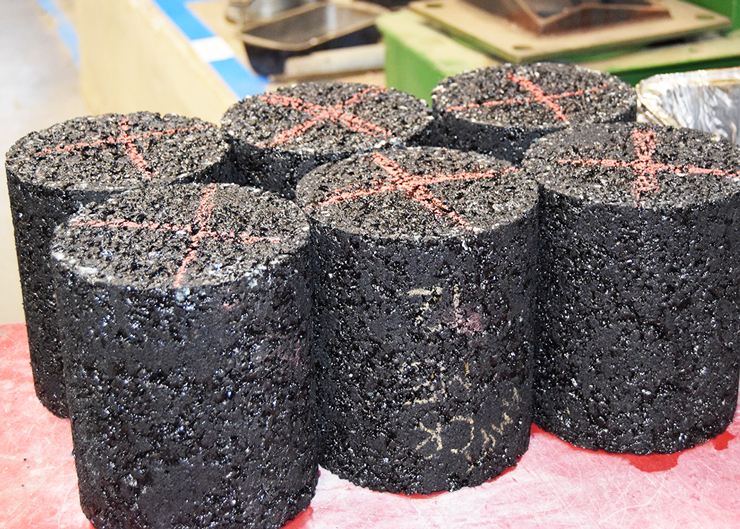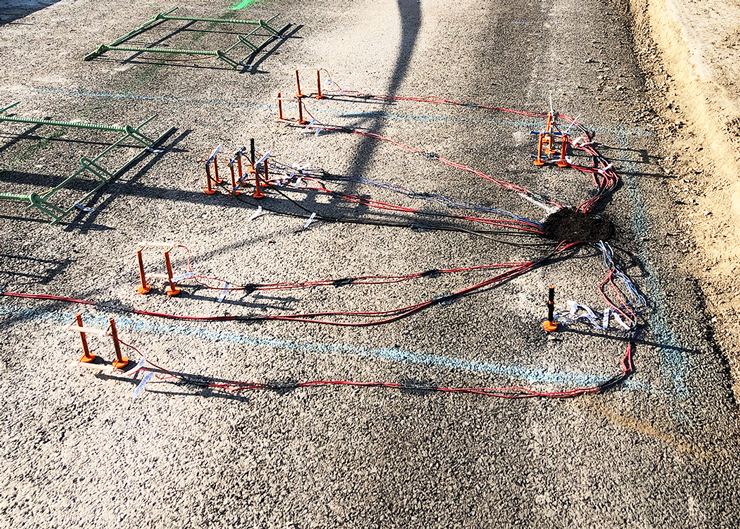Pavement Innovations Will Have a Lasting Impact
Caltrans and the UC: Partners on the Road to Durability

The highway of tomorrow starts with a vision and ends with construction.
It’s taking an idea and turning it into a plan to rebuild a major urban interstate freeway to endure six decades of weather and wear and tear.
It’s developing and testing a new formula for fast-setting concrete that allows motorists to drive on newly poured concrete pavement in just 24 hours instead of 20 days after the last pump truck departs.
Paving the way for these innovations over the years has been a collaboration between Caltrans engineers and University of California researchers. Their goal is to build longer-lasting roadways cheaper and faster, and in a way that makes them easier to maintain while lessening the inconvenience to motorists during construction and the impacts on the environment.
“The way we operate with Caltrans is unique in the United States,” said John Harvey, a civil and environmental engineering professor and director of the University of California Pavement Research Center (UCRC) in Davis, one of the few advanced labs in the world conducting scientific research on road materials. “It is an integrated process. Caltrans has ideas what we should do. We look around and see what the needs are. Together we put together a series of topics and figure out a way to do that.”
Last fall, Caltrans approved a three-year $32 million interagency agreement to continue the work of the Partnered Pavement Research Center project.
“Caltrans and California are better in countless ways because of their dedication and expertise,” said Tom Pyle, chief of Caltrans Office of Asphalt Pavement Program. “They have provided valuable contributions to greenhouse gas reduction, urban heat island, 100-year concrete and long-life asphalt.”
Pavements take a pounding throughout state

Asphalt core samples are ready for evaluation by researchers.
Indeed, pavement is a hot topic for a state known for its love affair with the automobile. Each year, motorists log more than 192 billion miles a year on the 52,000-lane miles of Caltrans-maintained highways.
The roadways certainly take a beating — from chained-up big rigs climbing over an icy Donner Summit on Interstate 80 to RVs venturing on a sunbaked State Route 190 in Death Valley to the commuter parade on Interstate 405 in Southern California.
“Nobody thinks about pavement until something goes wrong,” said Harvey.
Caltrans and UC have been working together to build a better road for decades.
State lawmakers created the Institute for Transportation Studies at UC Berkeley in 1948, with the first pavement testing station established in Richmond in 1994. Fourteen years later, Caltrans helped set up a second facility at UC Davis, which included materials testing labs, a test road area and two heavy vehicle simulators.
The Yolo County complex sits on the rural west end of the UC Davis campus. Stationed behind the buildings are two large Caltrans-owned orange heavy vehicle simulators built in South Africa in 1974. Operating around the clock, these machines roll airliner-type wheels back and forth on test pavement to simulate 20 years of highway wear in just three to six months.
Inside the labs, graduate and undergraduate students assist researchers to evaluate the properties of different pavement mixtures — aggregate, or crushed rock, and glued together with a binder such as asphalt or cement. Researchers see how a mixture behaves, looking for conditions such as rutting or cracking.
Under the partnership, Caltrans and the center develop a three-year roadmap outlining research and development projects covering the Department’s construction, environmental and maintenance programs. Topics range from updating design procedures for predicting pavement distresses to studying the effects of pavement roughness on the cost of freight movement.
Putting the research into practice is paramount.
“The benefit of research is zero unless it is implemented,” Harvey said. “Before it (research studies) sat on the shelf for a long time. There was no real drive to do it on the big scale. Now we’re seeing a much faster turnaround.”
Putting research into practice

On a $370 million pavement rehabilitation and managed lane project on Interstate 5 in Sacramento, contractors demonstrated on the job that they met materials design and staging specifications aimed at extending the life of the roadway from 40 to 60 years.
The center and Caltrans are evaluating pilot projects.
One pilot is on rural stretch of State Route 113 near Woodland in Yolo County, where researchers are looking at a new way to place thinner concrete slabs on existing pavement to reduce costs and construction time. This faster-setting concrete allows motorists to drive on the new pavement within 24 hours — a significant reduction in the normal three-week curing period.
The center also is involved in a Caltrans pilot launched last summer on State Route 162 in Butte County in which the Department paved a stretch of roadway using 100 percent recycled materials. Recycled asphalt pavement and liquid plastic made with single-use, plastic bottles were used for the repaving work.
“As soon as we learn more about those plastic materials and can run the numbers, we’ll see if they are really an improvement,” Harvey said. “Sometimes, the things that sound great might not be as good environmentally.”
Over the years, the center has worked on projects throughout the state from Ukiah to Palmdale. During the construction of the eastern span of the San Francisco-Oakland Bay Bridge, the center performed testing at the Port of Oakland to evaluate the pavement for the new deck.
Looking in the future, research is likely to focus on using more recycled materials, how the pavement affects energy use of electric vehicles and the impact of autonomous vehicles on roadway design and greenhouse gas emissions.
“More has happened in the last five years than in the previous 25 years,” Harvey said.
Source: Gilbert Mohtes-Chan, Caltrans District 3 information officer

